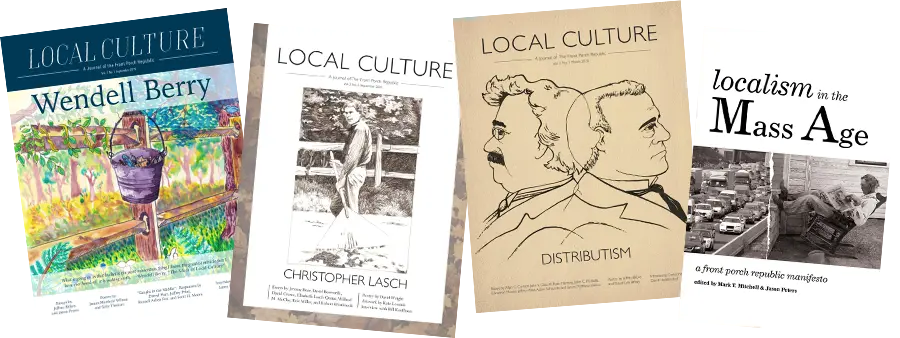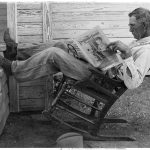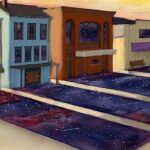The writer and art critic Dean Kissick detonated a charge in his December cover story for Harper’s Magazine, “The Painted Protest,” by claiming the arts are dominated by boring work from people who occupy its pedestals not by dint of talent, but due to their marginalized identities. It was surprising less for its perceptiveness than the fact that someone dared say it.
In an ironic twist, however, he charged the diversity imperative with ushering in a return to traditional styles and methods, yielding art that is “progressive in content but conservative in form.” Think transgender Guatemalans crafting rainbow-flag tapestries using indigenous methods, for example, or cubist domestic scenes of gay couples. The result, Kissick claims, is “canonical art remade by artists with minority identities.”
I rolled my eyes at the notion that what afflicts the arts world is conservatism, but Kissick’s essay took courage, given the Stalinist fits that have roiled the West’s cultural institutions. Kissick pegs the beginning of identity mania to 2017, which is precisely when #Resistance became the watchword for Progressives not just in the arts world, but in news media, universities, and among legions of federal employees. Every member of the intelligentsia was expected to prove that he abhorred anti-immigration sentiments and the racism that was the only feasible explanation for them, rejected the concept of “shithole” countries, and stood firmly against pussy-grabbing. Invoking Donald Trump brings to mind another prominent hashtag from that year: #MeToo, which metastasized from the defenestration of cads to oustings of apparatchiks deemed insufficiently committed to identity-based equity and fairness. If you occupied a coveted position in the media/entertainment/academic/arts ecosystem by the end of 2017, you understood that you could be the next one taken out by an ambitious hashtagger.
These trends explain the predominance of racial, ethnic, and sexual identity in Progressive-dominated institutions, but whence the stylistic reversion that troubles Kissick? He blames it on the loss of forward momentum, the consequence of Art ceasing a centuries-long conversation with itself. Modern artists stopped conjuring their “own answers to fundamental questions about what art should be,” which is how new artistic movements are born from past movements. Art lost the fever gripping it during the turn-of-millennium, when “the art world,” Kissick writes, “was where you would find the broadest remit to do whatever you wanted. It was where you could find the most unusual and preposterous ideas—and open bars, sex, and glamour too.”
In short, Kissick is bored. I don’t blame him; I can’t remember the last time I read a literary journal and found myself captivated, or even mildly interested, from cover to cover. The fact that so much of modern art’s “affective power derives from the artist’s biography rather than the work” is certainly one cause. What was once an edgy kind of diversity (“Ooh, this penis was sculpted from bison dung by a transgendered Lakota medicine woman!” “Aah, that villanelle about Donald Trump’s tiny hands was penned by a neurodivergent lesbian!”) has become so ubiquitous that “the project of centering the previously excluded . . . has now been hollowed out into a trope.” Yet the result is not the conservation of anything beloved; it is the tedious repetitions of a decadent age.
As my grandmother used to say, “If you couldn’t laugh, you’d cry.” Kissick recounts how an artist who filmed Hudson Yards with a camera mounted on a vibrating sex toy had, years prior, done an installation critiquing “industrial production” and “the privatization of pleasure” via an array of vibrators. “How many forms of late-capitalist disaffection,” he asks, “can one Magic Wand express?”
Sex toy cameras, juvenile scrawls decrying colonialism, pornographic paintings with titles like: “I Keep My Treasure in My Ass,”— Kissick thinks them uninspiringly conservative, but we civilians just think what the hell is wrong with these people?
Tom Wolfe’s dazzling 1975 Harper’s essay “The Painted Word,” to which Kissick’s jeremiad alludes, explains what happened. Wolfe chronicled how Modern Art rejected Realism’s focus on literary and historical works, along with its practice of crafting beauty laymen could admire. Artists abandoned Realism in successive waves of abstraction, until eventually we needed those jargon-laden explanatory placards that hover nowadays near museum displays like remora, each a pre-emptive revolutionary blow against the what the hell? of the bourgeoise.
“When people from other walks of life used to tell me that they did not understand art,” Kissick writes, “I would always reply that there is nothing to understand, there is no hidden meaning there to be deciphered.” Here a word on behalf of those benighted souls shambling along dimly lit other walks. I’ll wager there’s never been a human confused by all art. Not a soul to stand within St. Peter’s Basilica grumbling: “I don’t understand this.” None who’ve muttered during a Field nocturne: “I don’t get it.” When average people say, “I don’t understand art,” what they’re really saying is, “I don’t see why you believe this thing you’ve put in front of me is attention-worthy.” The art world’s rejoinder echoes in today’s elevation of identity over quality: It’s Art because we are artists.
Wolfe noted that visual artists and their patrons constitute “a small town” quickly overtaken by fads. Given how easily one can be banished from a narrow-minded town, it’s courageous of Kissick to tell his fellow citizens: “We lie to one another and to ourselves that all this humdrum work is inspiring, that it has an influence on how opinions are formed and hearts are won.” This calls to mind wisdom from Solzhenitsyn’s Nobel address: “In vain does one repeat what the heart does not find sweet.”
How then to explain the art world’s vanity? Here we must leave the scene of Art’s crash to ascertain where the steering fluid began to leak. Kissick’s aim for art, like the Bohemians over a century ago (how traditionalist of him!), and like so many of Art’s townfolk today, is that it shock. He recalls being titillated as a boy by an art teacher who showed his class a video performance featuring naked actors wrapped in sheets and doused in blood. “That’s how,” Kissick explains, “I came to understand the idea of modern art as transgressive.” How much bad thinking is rooted in the fervid lesson plans of third-rate teachers who crave the approval of their prepubescent students?
Art’s vanity persists because the trinity of Truth, Goodness, and Beauty has been knocked askew. The township of Art is gripped by an ideology of victimhood and power that must be affirmed as Truth by all who hope to remain citizens. They must evince “subservience to progressive little notions,” to quote Dostoevsky as relayed by Solzhenitsyn in his Nobel speech. Many of these citizens are further animated by a transgression ethic that passes for Goodness. And Beauty? Beauty is whatever we tell you it is.
Like the artists he criticizes, Kissick craves escape. His essay is filled with telling phrases like: “I do still encounter works that take me right out of the world.” Where does he want to go? Here’s a clue: “I felt transported by Rember Yahuarcani’s threatening mythical visions of pert-breasted rainforest creatures fucking one another while lynching songbird avatars of the European Union and the United States from their treetop gallows.”
I don’t know the precise coordinates of Hell, but I suspect an Uber ride from this place wouldn’t break the bank.
Kissick believes the fragments shored against our ruins cannot be reassembled. “Artists,” he laments, “have gone from trying to destroy reality . . . to attempting to reassert it and restore order today.” But, he says, “it is far too late. Consensus reality is gone.” To him this is a boon. “We are blessed to live now, in the West, in a strange world without common sense.” Therefore we artists should “embrace the surreal and try harder to imagine more outlandish fictions.” After all, “most of what we hear and see is an illusion, misrepresentation, or performance—and that’s fine.”
Little wonder Kissick yearns to escape reality. His corner of it seems to have few sunsets or smiles, a paucity of fried-chicken dinners and family photographs, no playgrounds or graveyards. And he believes we humans are well-suited to this grim landscape. “We are irrational, incoherent beings,” he writes, “and artists and writers should embrace this once more.”
We’ve been elevating the wrong identity, in other words. Don’t root your art in the fact that you’re an indigenous Australian lesbian, or a bipolar Moroccan Muslim. Kissick says lean into your lunacy, “to build different worlds, to whisper enticements in many ears, to try to destroy reality.” He would distribute paintbrushes in hell, that we might make fresher hells.
In his aforementioned speech, Solzhenitsyn lifts up an alternate artistic vision:
“So perhaps the old trinity of Truth, Goodness, and Beauty is not simply the decorous and antiquated formula it seemed to us at the time of our self-confident materialistic youth. If the tops of these three trees do converge, as thinkers used to claim, and if the all too obvious and the overly straight sprouts of Truth and Goodness have been crushed, cut down, or not permitted to grow, then perhaps the whimsical, unpredictable, and ever surprising shoots of Beauty will force their way through and soar up to that very spot, thereby fulfilling the task of all three.”
If beauty can save the world, maybe it can even save the art world. Perhaps even now it takes root in the pages of the small unfashionable press, on the canvases of the local painter, in the music of the self-promoted trio. It flowers in the little-known book passed friend to friend, at the corner gallery, in the neighborhood talent show. Its branches stretch upward because its roots press downward, into the here of this place, this good and fertile soil where man meets creation and is creation and is the image of his Creator. And by neither hectoring nor idolizing, all these small beauties in their silence open the eyes of our hearts once again to Truth and Goodness.
Image Via: Picryl







4 comments
Pierre
“The township of Art is gripped by an ideology of victimhood and power that must be affirmed as Truth by all who hope to remain citizens.” – this is the best definition I could think of for the state of American conservatism under Trump, congrats! Red-state victimhood combined with a desire for raw power at all costs under a serially bankrupt sex offender who clearly cares nothing for Judeo-Christian values!
Tony Woodlief
I’d say it’s an apt description for any close-minded community of ideologues.
Bill
Thanks for pointing me to Rember Yahuarcani’s art – it’s beautiful, and in the distorted human forms reminiscent of Bosch and Bruegel the Elder – though in a very different style and color palette.
Tony Woodlief
Thank you for saying so, Bill–while the work Kissick points out is to me a hellscape, many of Yahuarcani’s works that I’ve seen are, to me, fascinating and lovely.
Comments are closed.